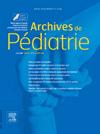儿童原发性免疫缺陷患者静脉注射免疫球蛋白相关的不良事件:一项为期10年的单中心研究
IF 1.3
4区 医学
Q3 PEDIATRICS
引用次数: 0
摘要
背景:静脉注射免疫球蛋白G (IVIg)被用作原发性免疫缺陷疾病(pid)的替代疗法。尽管IVIg通常被认为是一种安全的治疗方法,但不良事件(ae)的发生率(大多数是轻微和短暂的)在1%至81%之间变化。本研究的目的是确定儿童PID患者IVIg替代治疗的不良反应及影响因素。材料和方法:2012年1月1日至2021年12月31日在Dr. Sami Ulus儿童医院接受IVIg替代治疗的PID患儿纳入我们的研究。结果:总共评估了69例患者(52例男性,17例女性),共接受了2025次IVIg输注。40.6%的患者和8.9%的输注者出现不良反应。研究中遇到的所有不良事件均为轻度至中度。立即发作的不良反应发生率为3.5%,延迟发作的不良反应发生率为5.4%。未观察到迟发性不良事件。最常见的ae是头痛(n = 50, 2.5%)、发热(n = 37, 1.8%)和不适(n = 19, 0.9%)。最常见的即刻AE是发热(n = 28, 1.4%),最常见的延迟AE是头痛(n = 44, 2.2%)。结论:接受IVIg输注的PID患者发生的不良反应为轻至中度。儿科患者应在输注完成后通过联系其家人对延迟性ae进行随访,并应在下次输注前进行询问。如果给予适当的预用药和输注速率,IVIg替代是一种安全的治疗方法。本文章由计算机程序翻译,如有差异,请以英文原文为准。
Adverse events associated with intravenous immunoglobulin infusions in pediatric patients with primary immunodeficiency: A 10-year single-center study
Background
Intravenous immunoglobulin G (IVIg) is used as a replacement therapy in primary immunodeficiency disorders (PIDs). Although IVIg is generally accepted as a safe treatment, the incidence of adverse events (AEs), most of which are mild and transient, varies between 1 % and 81 %. The aim of this study was to determine the adverse effects and influencing factors associated with IVIg replacement therapy in pediatric patients with PID.
Materials and Methods
Children with PID who received IVIg replacement therapy between January 1, 2012 and December 31, 2021, at Dr. Sami Ulus Children's Hospital were included in our study.
Results
Overall, 69 (52 male, 17 female) patients who received a total of 2,025 IVIg infusions were evaluated. AEs were observed in 40.6 % of the patients and in 8.9 % of the infusions. All AEs encountered in the study were mild to moderate. Immediate-onset AEs were observed in 3.5 % of the infusions and delayed-onset AEs in 5.4 %. Late-onset AEs were not observed. The most commonly observed AEs were headache (n = 50, 2.5 %), fever (n = 37, 1.8 %), and malaise (n = 19, 0.9 %). The most common immediate AE was fever (n = 28, 1.4 %), while the most common delayed AE was headache (n = 44, 2.2 %).
Conclusion
AEs encountered in patients with PID receiving IVIg infusions are mild to moderate. Pediatric patients should be followed up for delayed AEs by contacting their families after the infusion is completed and should be questioned before the next infusion. IVIg replacement is a safe treatment when given with an appropriate premedication and infusion rate.
求助全文
通过发布文献求助,成功后即可免费获取论文全文。
去求助
来源期刊

Archives De Pediatrie
医学-小儿科
CiteScore
2.80
自引率
5.60%
发文量
106
审稿时长
24.1 weeks
期刊介绍:
Archives de Pédiatrie publishes in English original Research papers, Review articles, Short communications, Practice guidelines, Editorials and Letters in all fields relevant to pediatrics.
Eight issues of Archives de Pédiatrie are released annually, as well as supplementary and special editions to complete these regular issues.
All manuscripts submitted to the journal are subjected to peer review by international experts, and must:
Be written in excellent English, clear and easy to understand, precise and concise;
Bring new, interesting, valid information - and improve clinical care or guide future research;
Be solely the work of the author(s) stated;
Not have been previously published elsewhere and not be under consideration by another journal;
Be in accordance with the journal''s Guide for Authors'' instructions: manuscripts that fail to comply with these rules may be returned to the authors without being reviewed.
Under no circumstances does the journal guarantee publication before the editorial board makes its final decision.
Archives de Pédiatrie is the official publication of the French Society of Pediatrics.
 求助内容:
求助内容: 应助结果提醒方式:
应助结果提醒方式:


